|
|
See Explanation of the Crops Key for criteria. Click on a photo to see a larger version.
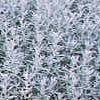
|
Artemesia |
A 2001 yard sale was the source of this bluish-white groundcover, which I planted along the front of my plot. Spreads quickly, grows to 3 feet tall, and dies back in the winter. The tiny blossoms are the same color as the plant. There are many varieties of artemesia, some of which are called dusty miller. There's also a dusty miller, senecio cineraria, which this plant is not. As to the variety of artemesia this plant is, I cannot determine. Photo is from 2002. In 2003, the spring weeds mixed themselves in with the artemesia, so it's not particularly effective as a groundcover. As of 2005, very little is left. Started in 2001. |
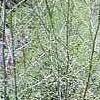
|
Asparagus |
This perennial was already growing on the plot before I started. I classify asparagus as a "non-food" because I don't enjoy eating it. However, the plants look reasonably nice and grow without any care whatsoever. They also fall over at the first rainstorm and provide shade for adjacent plants. Attract bumble bees. Started pre-1999. |
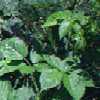
|
Blackberries |
This perennial was already growing on the plot before I started. The only care the plants require is pruning. The faint pink flowers attract bumble bees in late May and early June. Berry production is low and their flavor tends to be sour. Started pre-1999. |

|
Clover, White |
None other than the trefoil-leafed plant that intermingles with back yard lawns, white clover makes an effective, attractive groundcover, in my opinion. Heck, it's free and takes care of itself without getting out of hand. Started pre-1999. |
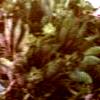
|
Hens and Chicks |
This is a $7 nursery purchase. The variety is sempervivum hybrid or 'Sanford Hybrids'. The plant rather blends in with the leaf-mulched ground, so it isn't visually distinctive. However, the plant seems rugged. In 2005, the adjacent stonecrop is overtaking the hens and chicks. Started in 2004. |
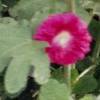
|
Hollyhock |
In 2002 I planted a "flowers of Monet" mixture including some thirty annuals and perennials. Hollyhock was the only perennial that came up. It grows quite tall and bushy and dies back in the fall. Flowers are large, come in white, light pink, medium pink, dark pink (as seen in photo), and deep red and start blooming in June. Started in 2002. • Seen from farther away |
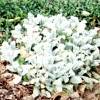
|
Lamb's Ears |
A local nursery let me have a small pot of lamb's ears for only $1 because they looked rather sickly with a multitude of yellow spots. The yellow spots seem to come and go, and the lamb's ears are spreading slowly. Started in 2004. |
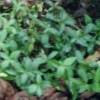
|
Myrtle |
Also known as periwinkle or vinca, I transplanted a square foot patch of myrtle from some nearby woods in April of 2003. I'm hoping it will make a good groundcover underneath and surrounding the hollyhocks. Started in 2003. |
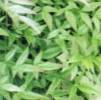
|
Nandina |
This bush (several, actually), related to bamboo, has been here since the beginning, once residing in the "no-man's land" at the edge of my plot. I think this is the variety nandina domestica compacta. This subspecies of nandina is a hardy sun-loving evergreen with red-tinted winter foliage, white berry-like flowers, and red berries. In summer of 2003, I weeded and mulched around the bushes. Started pre-1999. |
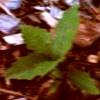
|
Oak Tree |
An oak tree may not be typical garden fare, but who said I have a typical garden? The acorn was apparently mixed in with some wood chips that I'm using for mulch, and it decided to grow. Because of the wood chips, I'm unable to dig out the sapling to turn it into a bonsai, so instead I'll let it grow where it is and keep it pruned bonsai-style to keep it small. Started in 2004. |
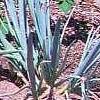
|
Onions, Egyptian |
In 1999, I transplanted some established plants provided by a co-worker. Amazingly hardy. The bulbs that form at the top of the stalks flop over into the soil to start new plants. In 2005, I am letting the wild strawberries overrun the onions. Started in 1999. |

|
Pine Tree |
This lone plant came up of its own accord amidst the blackberries and asparagus, probably in 2000. I decided to let it grow, and grow it has. Started in 2000. |
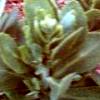
|
Sedum |
Sedum comes in many varieties; this is sedum spectabile 'neon' showy stonecrop, purchased from a local nursery for $7. It's an upright variety rather than a groundcover. It has done well so far. Started in 2004. |
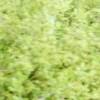
|
Stonecrop |
I actually spent six smackers at a nursery for a pot of this groundcover, sedum lineare, otherwise known as golden teardrop stonecrop. That was in April 2003. And how has the stonecrop done since then? It went into bloom from mid-May to mid-June with tiny yellow flowers. I guess those were the tears--it was crying because of all the rain we'd been having. After the flowering stage, the stonecrop started spreading. Started in 2003. |
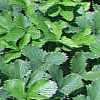
|
Strawberries |
This perennial was already growing on the plot before I started. I classify strawberries as a "non-food" because, although my strawberries form blossoms, the blossoms either fail to materialize into fruits, or materialize into fruits the size of a big pea. However, the plants are attractive and healthy and reproduce themselves to provide a groundcover effect in the manner of ivy, myrtle, or pachysandra. Started pre-1999. |
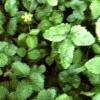
|
Strawberries, Wild |
This perennial was already growing on the plot before I started. The fruits on these strawberry plants are about the size of a chickpea and are gritty and not at all juicy or worth eating. However, the plants are attractive and healthy and reproduce themselves to provide a groundcover effect in the manner of ivy, myrtle, or pachysandra. Started pre-1999. |

|
Violets |
It took me a long time to identify this slow-spreading groundcover which was already growing on the plot when I started. The leaves are heart shaped with slightly scalloped edges, and the flowers appearing in April are bluish-purple. Started pre-1999. • At the front |
This page hosted by ![]() Get your own Free Home Page
Get your own Free Home Page
Last updated July 8, 2005 by Colt Mazeau